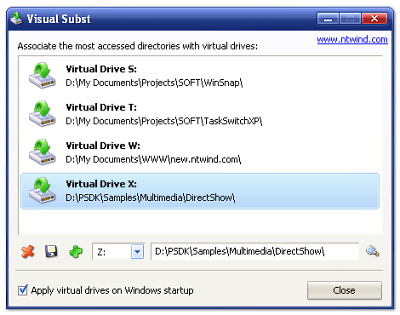Geek Software of the Week: Vsubst!

In Citrix, we sometimes rename the “C:” and “D:” drives on a server as other drive letters. However, some apps want to be installed on “C:”. Well, what if the system drive is now “R:?” You need to create a “symbolic link” to that drive. In the old DOS days you could do it with the “SUBST” command. Now, in Windows, along comes a freeware Visual SUBST! Here it is:
“Visual Subst is a small tool that allows you to associate the most accessed directories with virtual drives. It uses the same API similar to the console ‘subst’ utility, but makes it easier to create and remove virtual drives in a GUI way. Personally, I use virtual drives everywhere – I always prefer to press ALT+F1 in the file manager and switch to a project directory where hundreds of various files are kept. Using virtual drives, these files can be quickly accessed at any time. Generally, a virtual drive is just a symbolic link in the Local MS-DOS Device namespace. It is just one more Windows feature added for backward compatibility with old programs. Virtual drives are therefore objects of the operating system, and Visual Subst can create, enumerate and delete these objects. All local MS-DOS device names are removed when the user is logging off. To handle this issue, Visual Subst saves the list of virtual drives into an INI-file and is able to load them the next time. This program runs only on Windows 2000/XP and newer operating systems.”